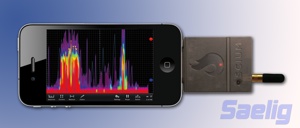Worldwide spending on robotics and related services will more than double by 2020, growing from $91.5 billion in 2016 to more than $188 billion in 2020, according to the newly updated “Worldwide Commercial Robotics Spending Guide” from International Data Corporation (IDC).
In addition to spending data on robotic systems, system hardware, software, robotics-related services, and after-market robotics hardware, the robotics spending guide now includes data on commercial purchase of drones and after-market drone hardware.
“The market for robotics continues to experience tremendous growth,” said John Santagate, research manager, Supply Chain at IDC Manufacturing Insights. “This growth is really fueled by a combination of technology improvements, expanded use cases, and acceptance in the market. Innovators in the field of robotics are delivering robots that can be used to perform a broader range of tasks, which is helping to drive the adoption of robotics into a wider base of industries.”
More than half of all robotics spending comes from the manufacturing with Discrete Manufacturing delivering 31% and Process Manufacturing providing 28% of the worldwide total in 2016, according to IDC (www.idc.com). This situation will remain relatively unchanged throughout the forecast with the two industries investing nearly $110 million in robotics in 2020. The leading robotics use case in Discrete Manufacturing is assembly, welding and painting, while mixing is the leading use case in Process Manufacturing.
After manufacturing, the three industries with the largest robotics spending in 2016 were Resource Industries ($8.0 billion), Consumer ($6.5 billion), and Healthcare ($4.5 billion). These industries will maintain their relative positions throughout the forecast, although Consumer spending will significantly narrow the gap with Resource Industries by 2020, according to IDC. Cross Industry robotics spending, which represents use cases common to all industries, such as warehouse pick and pack, will also rank among the top segments throughout the five-year forecast. The industries that will experience the fastest growth over the 2015-2020 forecast period are Consumer, Healthcare, and Retail.
“Robotics is now an integral part of industry transformation, which has brought about significant improvement in operational agility and efficiency in both developed and emerging markets,” said Dr. Jing Bing Zhang, research director, Robotics at IDC Manufacturing Insights. “We are seeing faster growth of robotics adoption in general industry roles, and some of the leading suppliers we tracked have enjoyed compound annual growth rates of more than double that for automotive industry for the past few years.”
From a technology perspective, purchases of robotics systems, which includes consumer, industrial, and service robots, and after-market robotic hardware will total more than $40 billion in 2016, according to IDC. Services-related spending, which encompasses applications management, education & training, hardware deployment, systems integration, and consulting, will come to more than $20 billion in 2016. The fastest growing segments of robotics spending are drones and after-market drone hardware, which will grow to nearly $20 billion in 2020.



